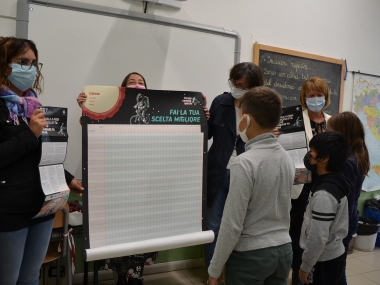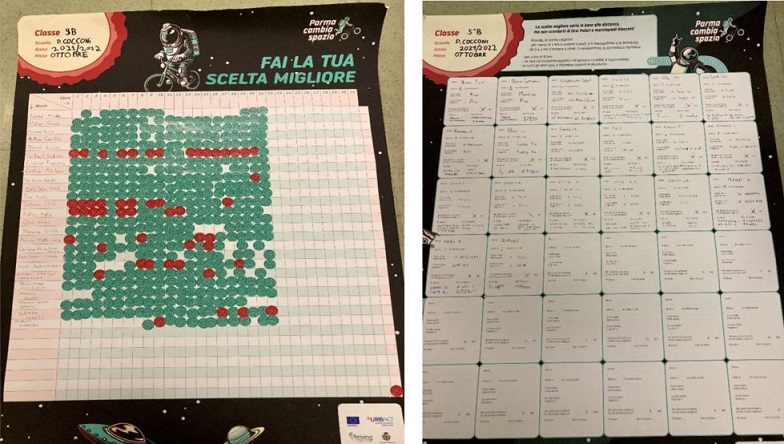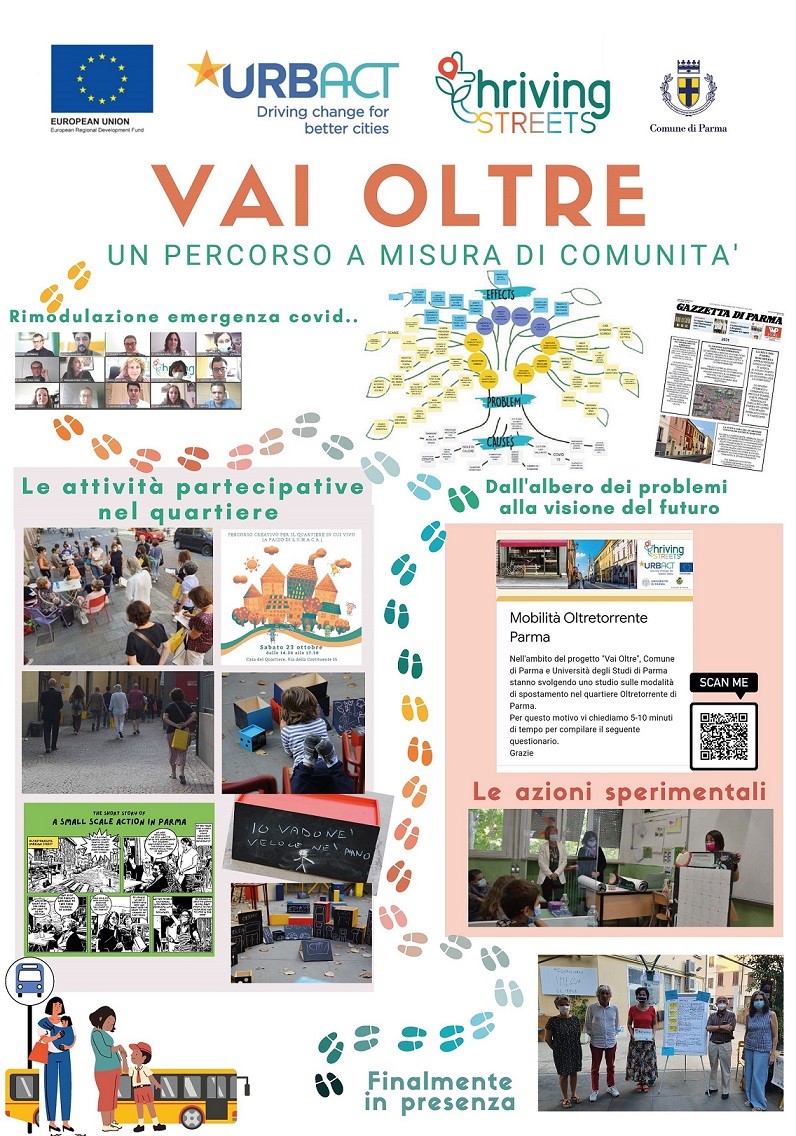An inclusive public transport and gamification in schools: the small scale actions in Parma
Edited on
05 September 2022Restore the old charm of Oltretorrente: turn a neighbourhood into a thriving and sustainable hub for the entire city and for nonresidents by leveraging on mobility solutions and on its heritage and its various public areas (squares, streets, community house). This is the ambition of the city of Parma in leading the Thriving Streets network.

To reach this ambitious vision, we implemented two small scale actions. They gave us the possibility to test the feasibility, the relevance and the added value of two actions before including them in our Integrated Action Plan.
A gamification for active mobility in primary schools
School traffic is a major challenge of Oltretorrente. Therefore, in Autumn 2021, Parma implemented a gamification experiment in two primary schools to increase the awareness of children and their families on the impacts of cars and encourage them to try and test different mobility options to school.
Gamification proved to be an effective approach to engage with children, teachers, and families on sustainable mobility. It is also quite simple to design and to implement.
Following a press conference where we presented the results of the SSA and further contacts with other schools, the gamification has been replicated in two other primary schools in April-May 2022. It is the fist action of the IAP to be implemented! Our aim is to make it a long term action to be replicated in Autumn and Spring; it cannot be an activity for the whole school year, but it could become a regular appointment for primary schools in Parma.

Survey to assess accessibility and effectiveness of public transport
Parma investigated the accessibility to public transport in Oltretorrente and the perceptions on the efficiency and quality of public transport in the area for commercial activities and for elderly and people with reduced mobility. This was a necessary preliminary step to assess the need and the feasibility of setting up a new bus line connecting the inner part of the neighbourhood with the city and identify possible alternatives, such as a redesign of existing bus routes and on demand, individual services.
The survey has been very useful to understand the mobility dynamics in the neighbourhood and it is the first survey being implementing in the neighbourhood. It also was useful to investigate the difficulties that users face in using public transport and collects their perceptions on the level of efficiency and quality of public transport in Oltretorrente.

Some lessons learnt
• Small is beautiful: consider smaller interventions, not just big, expensive projects. Small solutions can be implemented in a shorter time, with less resources, are less risky and can address the requests of citizens in a shorter time.
• You can’t do it alone: Your potential allies are out there - be creative and innovative in engaging stakeholders, to encourage participation and the design of innovative solutions. Don’t forget: participation is a matter of trust between citizens and local government (and building trust takes time)! Draw on the wealth of experience, knowledge and tools of URBACT cities.
• Evidence is king: do not take anything for granted, don’t work based on assumptions. You can never know enough about your city challenges and dynamics. Engage with stakeholders, collect data and evidence relentlessly. (However, be careful to avoid analysis paralysis!).
• There is no simple solution: the physical and social complexity of an urban neighbourhood always requires an integrated approach and multisectorial competences.

Submitted by Francesca Blamonti on
